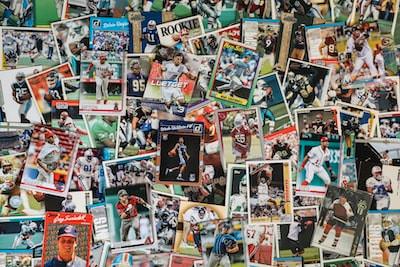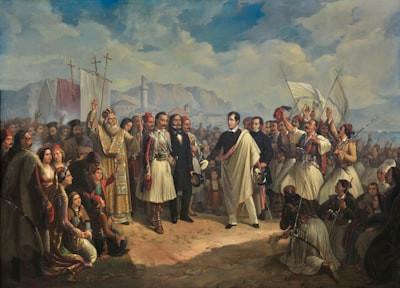Explore the World's Best Ideas
Join today and uncover 100+ curated journeys from 50+ topics. Unlock access to our mobile app with extensive features.
Understanding The Different Types Of NFTs
The interest in understanding the different NFT types has been growing in recent times.
People are interested in the promising economic potential associated with NFTs apart from a vision for transforming conventional asset management.
The gradual growth visible in the domain of non-fungible tokens can ensure prolific opportunities for NFT creators and investors. A clear impression of the different types of non-fungible tokens could help in making better decisions in your NFT journey.
14
155 reads
Common Categories of NFTs
The foremost classification of NFT types refers to the general categories. The three common types of NFTs include,
- Original or copy of work, documented on a blockchain network or DLT
- Digitally native NFTs, which have ownership rights to the work constituting the NFTs
- NFT metadata, which involves the NFT providing representation of ownership for metadata files related to the internet
13
96 reads
Collectibles
The foremost example of NFTs emerged with the development of Cryptokitties, which are online collectibles. As a matter of fact, Cryptokitties are the first instance of people using NFTs. Interestingly, Cryptokitties became so popular in 2017 that they congested the Ethereum network.
Cryptokitties are one of the striking additions to non fungible tokens list in the category of digital collectibles. They are basically digital kittens with distinct traits that make them popular and favorable than others.
13
71 reads
Artwork
Artwork is also another prominent candidate for NFTs. The common types of non-fungible tokens in this domain refer to programmable art, which features the unique concoction of creativity and technology. Currently, there are many limited edition artwork pieces in circulation with the scope for programmability under certain conditions.
The use of oracles and smart contracts could help artists in creating images which are represented on blockchain networks. Digital art NFTs have also encouraged possibilities of participation from the legacy arts industry.
13
57 reads
Event Tickets
Another promising addition among the types of NFTs would refer to event tickets. Such types of NFTs allow people attending events such as music festivals and concerts to verify their identity and tickets. Event managers could mint a specific number of NFT tickets on a selected blockchain platform.
Customers could purchase the tickets through an auction and store them in their wallets with easy accessibility through mobile devices
13
52 reads
Music and Media
The domain of music and media is also trying out experiments with NFTs, thereby leading to another category of NFTs. It is possible to link music and media files to NFTs, thereby enabling an individual with true ownership claim to access the files.
While artists get the advantages of reaching out directly to their followers and new audience, the listeners get a premium experience. The sense of exclusivity in purchasing NFT music is one of the foremost reasons for infusing traits of vintage vinyl records.
13
49 reads
Gaming
The common types of non fungible tokens in the domain of gaming are primarily focused on in-game items. NFTs have evoked profound levels of interest among game developers. They can offer the functionality of ownership records for in-game items, thereby driving the growth of in-game economies. NFTs in the gaming sector also focuses on introducing a wide array of benefits for players.
While in-game collectibles were common requirements for a better experience of the games, NFTs have the potential for changing their value.
13
56 reads
Real World Assets
Even though you cannot find many NFT types serving as tokens for real-world items, the progress in NFT domain can make that happen.
For example, many NFT projects are presently focusing on the tokenization of real estate alongside luxury goods. NFTs are basically deeds, and they can introduce the flexibility for purchasing a car or home with an NFT deed. Therefore, NFTs representing real-world assets can capitalize on the opportunities with cryptographic proof of ownership.
13
51 reads
Identity
One of the crucial traits of non fungible tokens is scarcity. Every NFT is unique and cannot be interchanged with any other token. In the case of identity NFTs, the working is similar to that of event tickets NFTs. They can serve as unique identifiers, thereby serving as reliable support for identity management systems.
The common applications of identity-based NFTs could be evident in certifications and licensing. Minting certifications and licenses and NFTs for proving and verifying records of an individual could change the identity management sector.
13
51 reads
Memes
The most significant advancement in the domain of NFTs in recent times is the sale of memes as NFTs. While being a part of popular culture and an instant favorite among internet users, memes have also been associated with NFTs.
The sale of memes as NFTs showcases the potential for unique meme creators to participate in an evolving futuristic ecosystem.
13
60 reads
IDEAS CURATED BY
Nina Alvarez's ideas are part of this journey:
Learn more about entertainment with this collection
Cultivating a growth mindset and embracing challenges
Developing adaptive thinking and problem-solving skills
Effective learning frameworks and approaches
Related collections
Similar ideas
7 ideas
The History of NFTs & How They Got Started
blog.portion.io
5 ideas
Read & Learn
20x Faster
without
deepstash
with
deepstash
with
deepstash
Personalized microlearning
—
100+ Learning Journeys
—
Access to 200,000+ ideas
—
Access to the mobile app
—
Unlimited idea saving
—
—
Unlimited history
—
—
Unlimited listening to ideas
—
—
Downloading & offline access
—
—
Supercharge your mind with one idea per day
Enter your email and spend 1 minute every day to learn something new.
I agree to receive email updates






